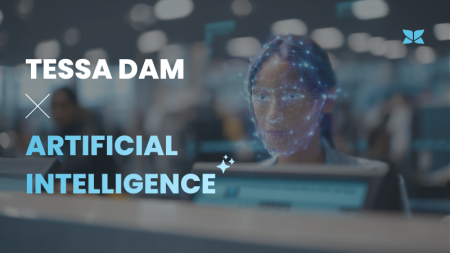What is Software Integration?
Software integration refers to the process of connecting various software components or systems to ensure unified and seamless functionality. It involves enabling different applications, which may be from various providers or run on different platforms, to communicate and exchange data. Integration can occur at both technical levels, such as connecting APIs or databases, and organizational levels, such as coordinating between different development teams.
The importance of software integration lies in its ability to optimize information flow within a company or between systems. In an era where businesses rely on a variety of specialized software solutions, integration enables more efficient use of resources. Additionally, it helps reduce redundant processes, improve data exchange, and enhance overall company performance.
What Types of Integration Are There?
In software integration, there are different approaches to connect various systems and applications. The type of integration depends heavily on the requirements, the systems involved, and the desired outcomes. The following are three main types of integration: data integration, functional integration, and presentation integration.
Data Integration
Data integration involves merging data from different sources into a central database or common data model. The goal is to ensure data consistency, quality, and availability across various systems. This is particularly relevant for companies that use multiple software applications accessing different databases. Examples include CRM, ERP, or BI (Business Intelligence) systems, which rely on integrated data to provide accurate and up-to-date information.
Data integration methods can include batch processing, ETL (Extract, Transform, Load), or real-time data synchronization. The biggest challenge is ensuring data is correctly synchronized between systems, especially when different data formats or database structures are used.
Functional Integration
Functional integration aims to connect the functionalities of different systems so that they appear as a unified system. This is achieved by exchanging functions and services between systems or applications, often through APIs (Application Programming Interfaces) or web services. These enable one system to call and use the functions of another.
For instance, an e-commerce platform can integrate the payment function of an external payment provider via an API. This maintains a seamless user experience, even though two separate systems are communicating in the background. Effective functional integration requires close alignment of the technical interfaces and protocols between the systems involved.
Presentation Integration
Presentation integration focuses on merging the user interfaces of different systems. The goal is to provide the end-user with a unified and consistent user experience, even if multiple systems are running in the background. This type of integration is often found in portals or dashboards, where information and functions from different applications are brought together in a central interface.
An example of presentation integration would be a corporate portal that provides access to the email system, project management tool, and CRM through a single user interface. This approach improves user-friendliness and efficiency by eliminating the need to switch between systems.
What Challenges Should Be Considered in Integration?
Integrating software systems brings various challenges that can be technical, organizational, and security-related. These challenges need to be carefully addressed to ensure a successful and efficient integration. The following are the three biggest hurdles in software integration: heterogeneous systems, compatibility and interoperability, and security and privacy requirements.
Heterogeneous Systems
One of the biggest challenges in software integration is the variety of systems involved, which often run on different platforms, technologies, or programming languages. These so-called heterogeneous systems must communicate with each other, even though they were not originally designed to do so. A typical scenario involves companies using software solutions from different providers (e.g., for CRM, ERP, or accounting), with these applications using different data formats, APIs, or operating systems.
The challenge is enabling seamless interaction without requiring major changes to the existing systems. Middleware, such as an Enterprise Service Bus (ESB), can help by acting as an intermediary to standardize and translate messages and data between systems. However, managing the complexity of heterogeneous systems remains a significant challenge.
Compatibility and Interoperability
Another central issue in software integration is ensuring compatibility and interoperability between different systems. Compatibility means that various software components or systems can work together, while interoperability describes the ability to exchange data and functions across system boundaries.
Technical compatibility refers to hardware, operating systems, databases, and network protocols. Applications may be incompatible if, for example, they run on different operating systems or use different protocols for data transmission. Standards such as REST or SOAP web services, APIs, and data formats (e.g., JSON, XML) must be used to ensure interoperability.
The challenge is to ensure that all systems interpret the same data correctly and utilize the same functionalities. Different standards or versions can cause problems, requiring thorough planning and careful testing.
Security and Privacy Requirements
Software integration also brings significant security and privacy risks. Since data is exchanged between different systems through integration, the risk of security vulnerabilities that could be exploited by malicious actors increases. An unsecured API or inadequately protected data transfer path could give attackers access to sensitive information.
Additionally, protecting personal data, especially concerning strict legal requirements like the General Data Protection Regulation (GDPR), demands special attention. Mechanisms must be implemented to ensure that data is securely transmitted and only accessible to authorized users. This requires encryption technologies, access controls, and regular security audits.
Another challenge is enforcing privacy policies across systems when data is transferred from one system to another. Different security standards and policies between systems can increase the risk, making clear coordination between integration partners necessary.
How Do I Connect Two Software Programs?
Connecting two software programs is a core aspect of software integration and requires precise planning to ensure the systems work together efficiently and exchange functions and data correctly. Various methods, technologies, and tools enable seamless integration of software programs. Below, we explain how to connect software programs, the techniques and approaches used, and the challenges that may arise during the integration process.
API (Application Programming Interface)
APIs are standardized interfaces that allow software programs to communicate with each other. An API provides functions and methods that one program can use to access the data and services of another program. This often happens through HTTP requests, with the data transmitted in formats like JSON or XML. An example is the integration of a weather service into an app, where the app accesses the weather service's data via an API.
Webservices (SOAP/REST)
Web services are a common way to connect software over the internet or a network. There are two main types of web services: SOAP (Simple Object Access Protocol) and REST (Representational State Transfer). SOAP uses a standardized messaging protocol and is well-suited for security-critical and complex integrations. REST is lighter and more flexible, often used for web-based integrations. RESTful web services use standardized HTTP methods (GET, POST, PUT, DELETE) to communicate between systems.
Middleware
Middleware acts as a mediator between different software applications, managing their communication and data flow. It enables systems that run on different platforms or technologies to be connected. An example of middleware is an Enterprise Service Bus (ESB), which acts as a central data distributor between systems, formatting and forwarding the data.
Point-to-Point Connections
Point-to-point integration involves a direct connection between two software programs. This method is relatively easy to implement but difficult to scale because each new integration requires an individual connection. As the number of systems to be connected increases, the complexity of the integration grows exponentially, making this method unsuitable for larger systems.
Service-Oriented Architecture (SOA)
SOA is an architectural style that aims to organize software applications in the form of reusable services. These services communicate via standardized protocols and enable software modules to be flexibly used in different applications. SOA promotes software reusability and modularity and is a popular method for integrating larger systems.
Microservices and Containerization
Microservices are a modern evolution of SOA, where applications are divided into small, independent services that communicate with each other. Each microservice fulfills a specific function and can be developed, deployed, and scaled independently. Containerization technologies like Docker play an essential role here by providing a flexible and isolated environment for each microservice, facilitating integration through APIs and messaging systems.
Example: Integration of Two Software Programs (CRM and ERP)
A common scenario in businesses is the integration of a CRM system (Customer Relationship Management) with an ERP system (Enterprise Resource Planning). The CRM system captures customer data and interactions, while the ERP system manages internal business processes such as inventory, accounting, and production.
Through API-based integration, the CRM system can automatically send customer order information to the ERP system. When a sales representative records a new order in the CRM system, this information is sent via the API to the ERP system, which then updates stock levels and delivery schedules. At the same time, the ERP system can send status updates back to the CRM system so that the sales representative always has up-to-date delivery information. This type of integration improves information flow and reduces manual intervention.
What Is an Integration Platform as a Service (iPaaS)?
iPaaS (Integration Platform as a Service) is a cloud-based solution that enables businesses to integrate different software applications—both cloud-based and on-premises—quickly and efficiently. iPaaS provides a range of tools and services that help developers establish connections between various systems, orchestrate data flows, and implement automations. Unlike traditional integration methods, which often require complex and expensive infrastructure, iPaaS offers a flexible and scalable platform that can be used without significant upfront investment.
The advantages of iPaaS lie in its simplified management, reduced development effort, and the ability to monitor and manage integrations through a centralized platform. iPaaS also enables the integration of diverse applications, including SaaS solutions (Software as a Service) like CRM or ERP systems, and offers preconfigured connectors for many popular software solutions. This makes it easier for businesses to quickly respond to changes in the IT landscape and seamlessly integrate new business applications without having to build complex infrastructure.
iPaaS not only supports real-time data processing and synchronization but also provides automation and scalability, making it particularly appealing to businesses that rely on fast and flexible integration.
Conclusion
Connect systems efficiently
Connecting software programs is a crucial process in modern IT landscapes that enables efficient data and function exchange between systems. Depending on the requirements, various integration techniques such as APIs, web services, or middleware are available to ensure seamless collaboration. Choosing the right methods and tools is essential to manage complexity and ensure that the integration remains scalable and secure in the long term.




